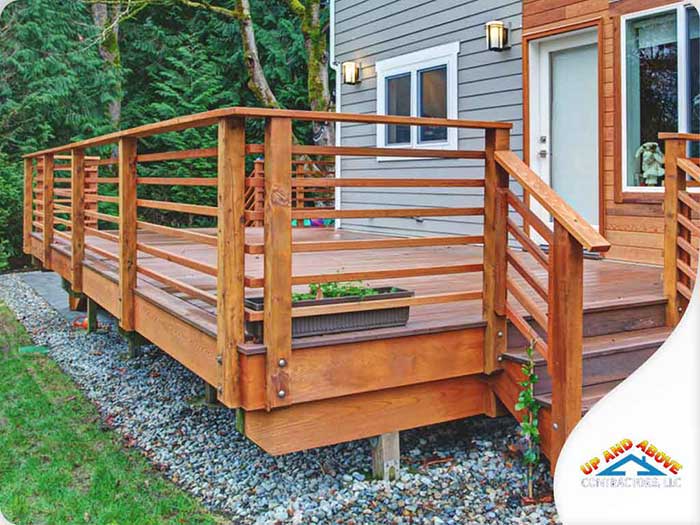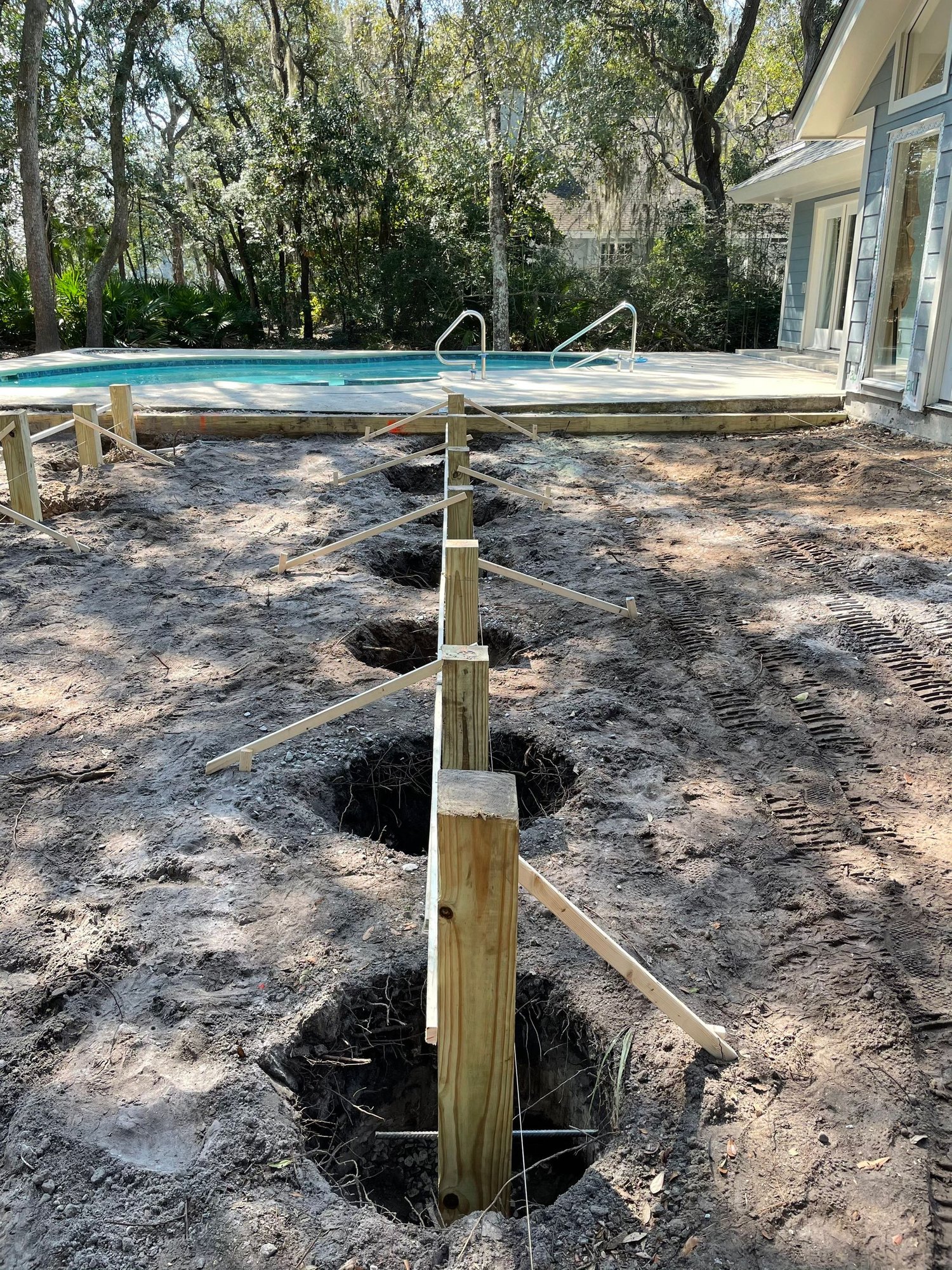Architectural Stability Issues: Picking the Right Deck Footings for Your Outdoor Task
Architectural Stability Issues: Picking the Right Deck Footings for Your Outdoor Task
Blog Article
Selecting the Right Deck Footings for Stability and Longevity
The long life and safety of your deck depend heavily on the kind of grounds you select, as they supply the important support and stability to hold up against the test of time. In this discussion, we will certainly discover the various kinds of deck footings, consider the essential aspects to consider when making a choice, and delve into the pros and disadvantages of various alternatives.
Types of Deck Grounds
These footings are composed of a round opening filled with concrete, which provides a solid foundation for the deck posts. Concrete pier grounds are relatively easy to install and offer excellent security, making them a prominent selection for several deck tasks.
These grounds are set up by screwing them into the ground, which develops a safe foundation for the deck. They additionally enable for easy change and leveling of the deck if needed.
Conversely, some home builders choose precast concrete grounds. These footings are made of long lasting concrete and be available in numerous sizes and shapes to fit different deck styles. Precast concrete footings are practical to install and provide a secure base for the deck structure.
Lastly, another choice is the post-in-anchor ground system. This kind of ground includes driving a steel anchor right into the ground and affixing it to the deck article. It offers versatility in terms of positioning the deck blog posts and appropriates for decks with light-weight frameworks.
When selecting the appropriate sort of deck footing, it is necessary to take into consideration factors such as soil problems, deck load, and regional building ordinance (Deck Footings). Consulting with a professional specialist or architectural engineer can help make sure the ideal footing is selected for a secure and stable deck
Variables to Think About When Selecting Grounds
When selecting the proper grounds for a deck, it is essential to carefully consider different aspects such as dirt problems, deck load, and adherence to regional building ordinance. These aspects play a substantial role in ensuring the stability and longevity of the deck framework.
Among the primary factors to consider is the soil problems. The kind of dirt on which the deck will be built identifies the sort of grounds called for. Decks developed on loose or sandy soils might require deeper grounds to offer ample support and protect against settling. On the other hand, decks improved clay or extensive soils might require footings that can fit the soil's tendency to expand and contract.
Another vital aspect is the deck tons. The weight of the deck, including the products utilized and any possible online loads such as furnishings or events, should be considered when choosing footings. The grounds should be designed to birth the weight of the deck and distribute it evenly to stop any type of structural concerns or failures.
Finally, adherence to local structure codes is vital. Building regulations differ from region to area, and it is important to follow the particular needs set by the neighborhood authorities. Deck Footings. These codes make sure that the deck is developed safely and fulfills the required criteria for structural integrity and load-bearing ability
Concrete Footings: Advantages And Disadvantages

Concrete grounds provide a number of benefits and disadvantages when utilized as the structure for a deck. On the silver lining, concrete footings supply superb stability and sturdiness. Concrete is a rigid and strong material that can support heavy tons and hold up against various climate condition. It likewise has a lengthy life-span, making it a trusted choice for long-term use.
An additional advantage of concrete grounds is their adaptability. They can be put right into different sizes and shapes to fit different deck styles and setups. Concrete footings can be customized to fit the specific demands and demands of the deck framework.
Nevertheless, there are also some drawbacks to making use of concrete grounds. One major negative aspect is the price and labor associated with their installation. Concrete grounds need excavation and commonly require the assistance of heavy equipment. This can boost the general cost of the deck task and may require specialist help.

Helical Piers Vs. Sonotubes: Which Is Much better?
In considering the foundation options for a deck, the comparison between helical piers and sonotubes is essential in establishing the superior selection. They are turned into the ground using hydraulic machinery, giving a secure and sturdy foundation for the deck.
When it involves security and toughness, helical piers have the upper hand. The helical plates on the piers create a solid hold with the soil, moving or protecting against any kind of movement of the deck. This is specifically useful in areas with unsteady or changing dirt conditions. Sonotubes, on the various other hand, depend entirely on the concrete filling for security, which may not supply the exact same level of stamina and resistance.
In regards to installation, helical piers are fairly easier and faster to set up contrasted to sonotubes. The hydraulic machinery made use of to turn the piers into the ground makes certain a reliable and fast procedure. websites Sonotubes, on the various other hand, need digging holes and pouring concrete, which can be taxing and labor-intensive.
Furthermore, helical piers are an even more functional choice. If needed, they can be utilized in different dirt problems and can be adjusted or reinforced. Sonotubes, on the various other hand, might call for additional support, such as rebar, in specific soil problems or locations with high tons demands.
Picking the Right Footings for Your Deck's Measurements
For optimum structural integrity, it is necessary to very carefully pick the ideal footings that align with the dimensions of your deck. The dimensions of your deck, including its width, height, and length, play a considerable function in establishing the kind and dimension of grounds called for.
When choosing footings for your deck, it is crucial to think about the load-bearing capability of the soil. The weight of the deck, combined with the weight of any furnishings or people on it, puts in a considerable force on the footings (Deck Footings). It is vital to select footings that can adequately sustain this weight without moving or sinking over time.
The size and form of the grounds ought to also be taken into consideration. Bigger decks with higher dimensions call for larger footings to give enough stability and support. The shape of the grounds, whether they are square or round, relies on the style and layout of the deck. Furthermore, the depth at which the footings are mounted ought to be identified based upon the frost line in your region to prevent any type of heaving or moving because of freezing temperatures.
Verdict
In final thought, selecting the ideal deck grounds is crucial for guaranteeing stability and sturdiness. Aspects such as the kind of footings, the deck's dimensions, and the benefits and drawbacks of different alternatives ought to be taken into consideration. Concrete grounds offer toughness and durability, yet may be extra expensive and lengthy to install. Helical piers and sonotubes have their own benefits and negative aspects. Eventually, selecting the proper footings for your deck's specific demands is important for a long-lasting and effective structure.
These grounds consist of a cylindrical hole loaded with concrete, which offers a strong foundation for the deck articles. Concrete pier grounds are reasonably very easy to mount and supply superb stability, making them a preferred selection for numerous deck jobs.
Precast concrete footings are hassle-free to mount and give a steady base for the deck framework.
It uses adaptability in terms of placing the deck blog posts and is check this site out ideal for decks with light-weight frameworks.
Concrete footings use a number of advantages and drawbacks when utilized as the structure for a deck.
Report this page